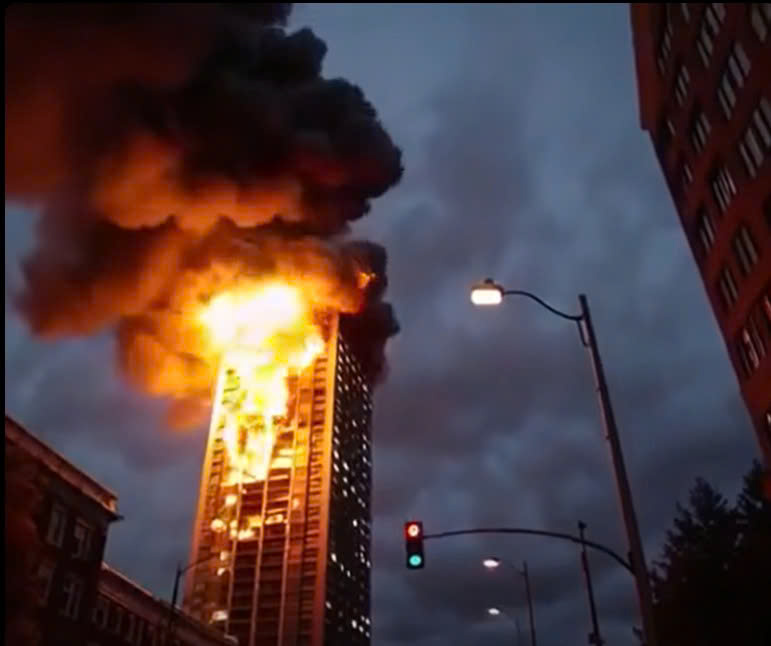Something powerful and unsettling has stirred beneath the earth’s crust — a brutal reminder of how fragile human life can be when nature decides to move. Just hours ago, a massive 7.7-magnitude earthquake struck near the China–Myanmar border, shattering lives, homes, and entire communities in seconds. Without warning or time to prepare, the violent quake ripped through the ground, transforming peaceful towns into scenes of devastation. Scientists around the world are now racing to determine whether this disaster is an isolated event or part of a larger pattern of seismic instability. Meanwhile, rescue teams continue to fight against time and the elements to reach survivors buried under the rubble.

The quake struck at 12:50 p.m. local time on March 28, 2025, shaking the Sagaing Region of Myanmar with unprecedented force. Its epicenter was located near Mandalay, a major city that felt the full brunt of the disaster. The quake originated from a strike-slip fault — the kind where two sections of the earth’s crust grind past each other horizontally — sending shockwaves that rippled far beyond Myanmar’s borders. Within minutes, tremors were reported in Thailand, southwestern China, and parts of Vietnam. Because the quake struck at a shallow depth of only about 10 kilometers (6 miles), its energy was released close to the surface, amplifying the destruction. Entire blocks of buildings crumbled, roads split open, and bridges swayed dangerously before collapsing. Thousands of residents fled their homes, many barefoot and panicked, as aftershocks continued to shake the ground beneath them.
The scale of human loss has been staggering. As of April 2, official figures estimate at least 2,886 people dead, more than 4,600 injured, and 373 still missing. Experts warn these numbers could rise as rescuers dig deeper into areas that remain cut off by landslides and debris. Over 10,000 buildings — including homes, schools, hospitals, and temples — have been destroyed or severely damaged. Entire neighborhoods have been reduced to rubble. In some towns, residents are using their bare hands to remove debris in hopes of finding family members. Many communities remain without electricity, clean water, or communication, making coordination of aid nearly impossible. The heartbreaking stories emerging from the ruins reveal both despair and extraordinary resilience. In one miraculous rescue, a 63-year-old woman was pulled alive from the wreckage after being trapped for 91 hours, surviving on rainwater and sheer willpower.
As the scale of the disaster became clear, the world’s response began to take shape — and with it, a new test of global diplomacy. China quickly mobilized one of its largest humanitarian operations in recent years. Within 24 hours, Beijing dispatched hundreds of medical personnel, earthquake specialists, and rescue teams equipped with drones, heavy machinery, and sniffer dogs. Chinese state media announced that relief supplies worth more than 100 million yuan (around $14 million) had been sent, including food, medicine, tents, and power generators. Chinese helicopters were also seen delivering emergency aid across the rugged border regions, where access by road is still nearly impossible. This swift and highly visible effort has drawn both praise and political attention, as analysts note how China’s humanitarian leadership in the region is reinforcing its influence in Southeast Asia.
By contrast, the United States pledged $2 million in aid — a fraction of China’s commitment — and faced delays in deploying its three-member disaster assessment team due to visa complications. Though Washington expressed condolences and support, the modest scale of its involvement has fueled debate among experts about shifting global influence. Some argue that Beijing’s rapid response could reshape regional alliances, positioning China not only as an economic powerhouse but also as a first responder in humanitarian crises. Others warn that disasters should not become geopolitical competitions, emphasizing that cooperation — not rivalry — should guide the global response.
Inside Myanmar, the crisis has forced a rare moment of reprieve in the nation’s ongoing internal conflict. In an unprecedented move, the ruling military government announced a temporary ceasefire lasting until April 22, 2025, to allow rescue and aid operations to proceed safely. This suspension of hostilities aims to give humanitarian organizations and foreign relief teams access to affected areas that are otherwise off-limits due to fighting. However, the situation on the ground remains fragile. Local resistance groups and aid workers report that some conflict zones are still too dangerous to reach, leaving thousands without assistance. The ceasefire, while promising, underscores how deeply humanitarian relief and politics are intertwined in Myanmar’s complex landscape.
Beyond Myanmar’s borders, the quake has also left deep scars in neighboring countries. In China’s Yunnan Province, tremors toppled buildings and cracked highways, forcing thousands to evacuate. Thai officials confirmed structural damage to several northern provinces, while in Vietnam, buildings swayed in Hanoi and surrounding areas. Emergency management agencies across Southeast Asia have been placed on alert as aftershocks — some exceeding magnitude 5 — continue to rattle the region. Experts caution that secondary hazards such as landslides, dam failures, and infrastructure collapse could trigger additional crises in the coming weeks.
Seismologists are now studying the quake’s unusual behavior. The rapid buildup of tectonic stress along the Sagaing Fault, which runs through both Myanmar and neighboring countries, has long been a concern. This fault is part of a larger network where the Indian and Eurasian plates collide — the same geological system responsible for some of Asia’s most powerful earthquakes, including those in Nepal and Sichuan. Early data suggest that this latest event released only part of the accumulated strain, leading some scientists to warn that further seismic activity may follow. Monitoring stations across Asia are now on high alert, tracking every tremor and aftershock with heightened scrutiny.
For survivors, however, the focus is far more immediate — food, shelter, and safety. Makeshift camps have sprung up in schoolyards and open fields. Aid agencies are distributing emergency rations and blankets, while medical workers struggle to prevent outbreaks of disease. “We lost everything,” said one mother in Mandalay, clutching her child beneath a tarp. “But at least we’re alive.” Her words echo across the disaster zone, where grief and gratitude coexist in fragile balance.
This devastating earthquake has carved a wound across three nations and shaken millions of lives. It serves as a stark reminder of our planet’s unpredictable power and our shared vulnerability. As the clock ticks, rescuers continue to dig through the debris, praying to find signs of life before it’s too late. The next few days will determine not just how many can be saved, but also how the world chooses to respond — with unity and compassion, or with hesitation and rivalry. For those trapped beneath the rubble and for the families waiting above it, every moment still matters.





